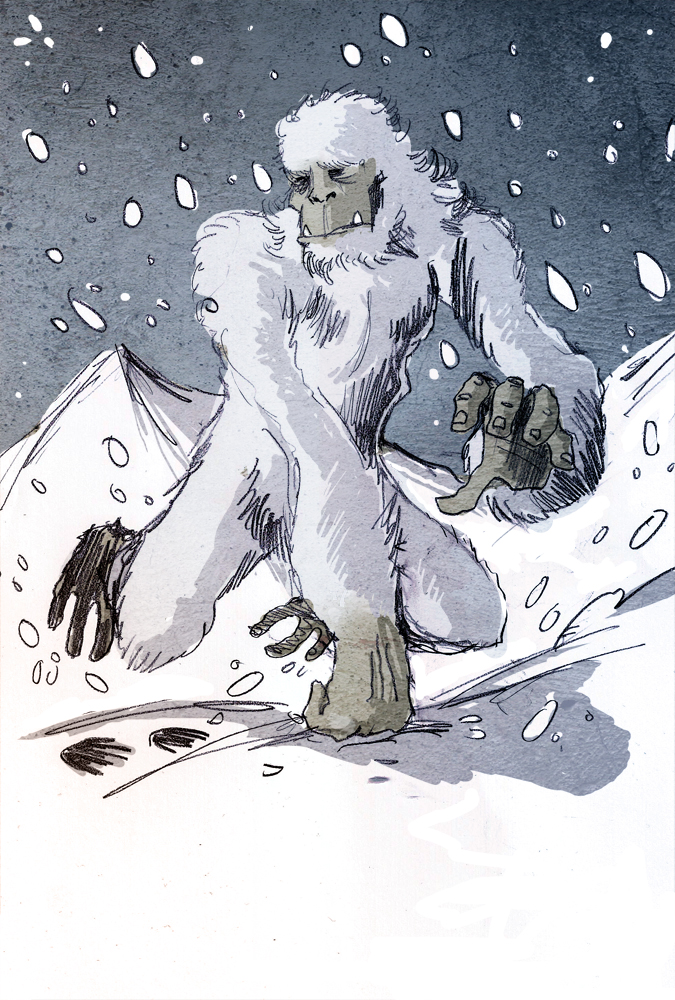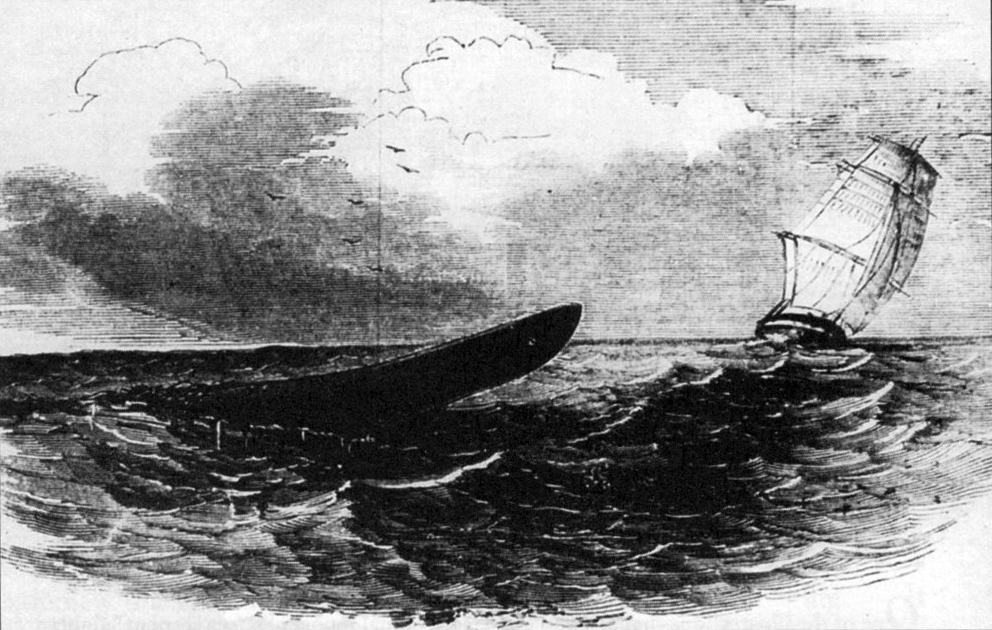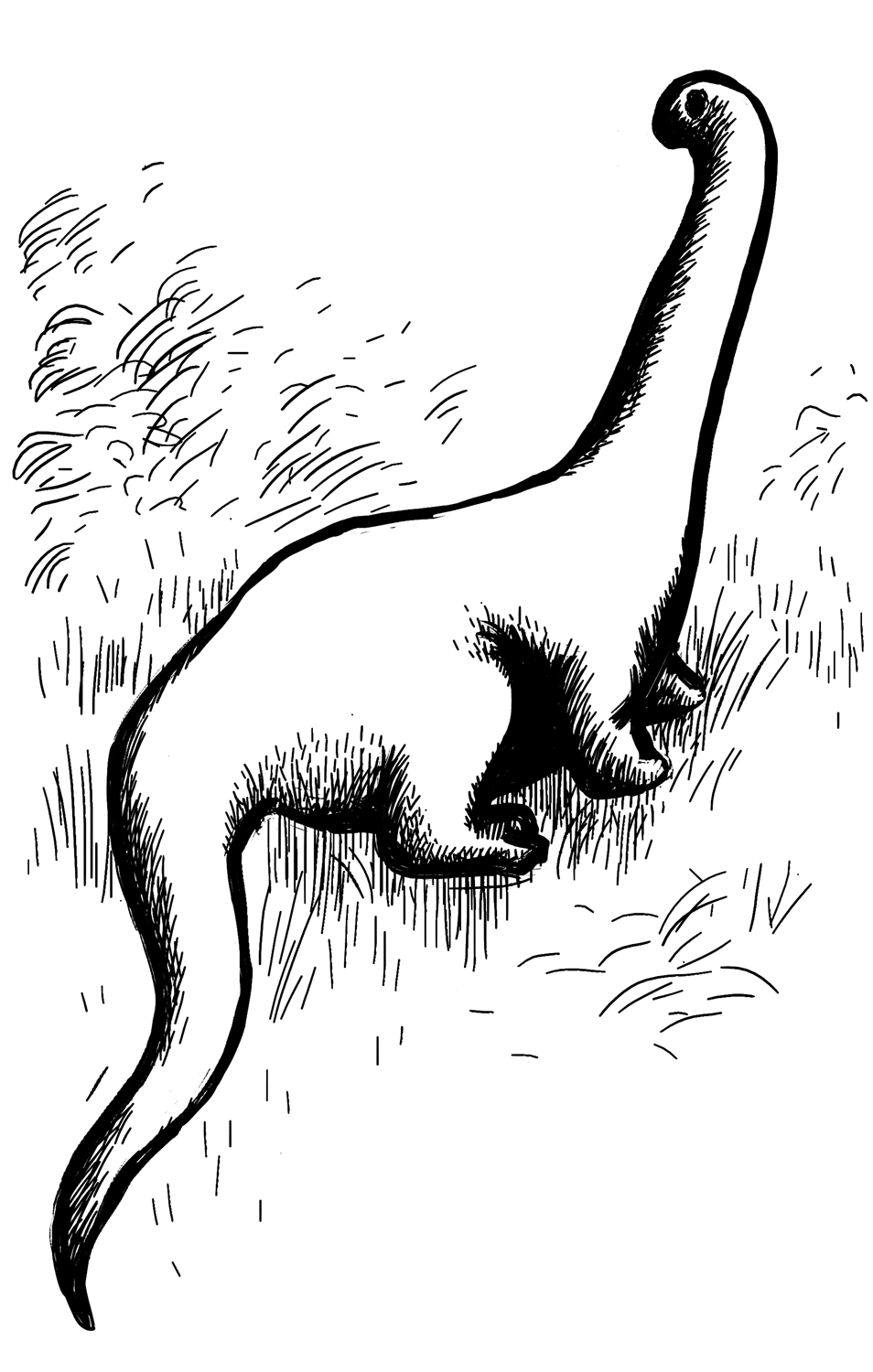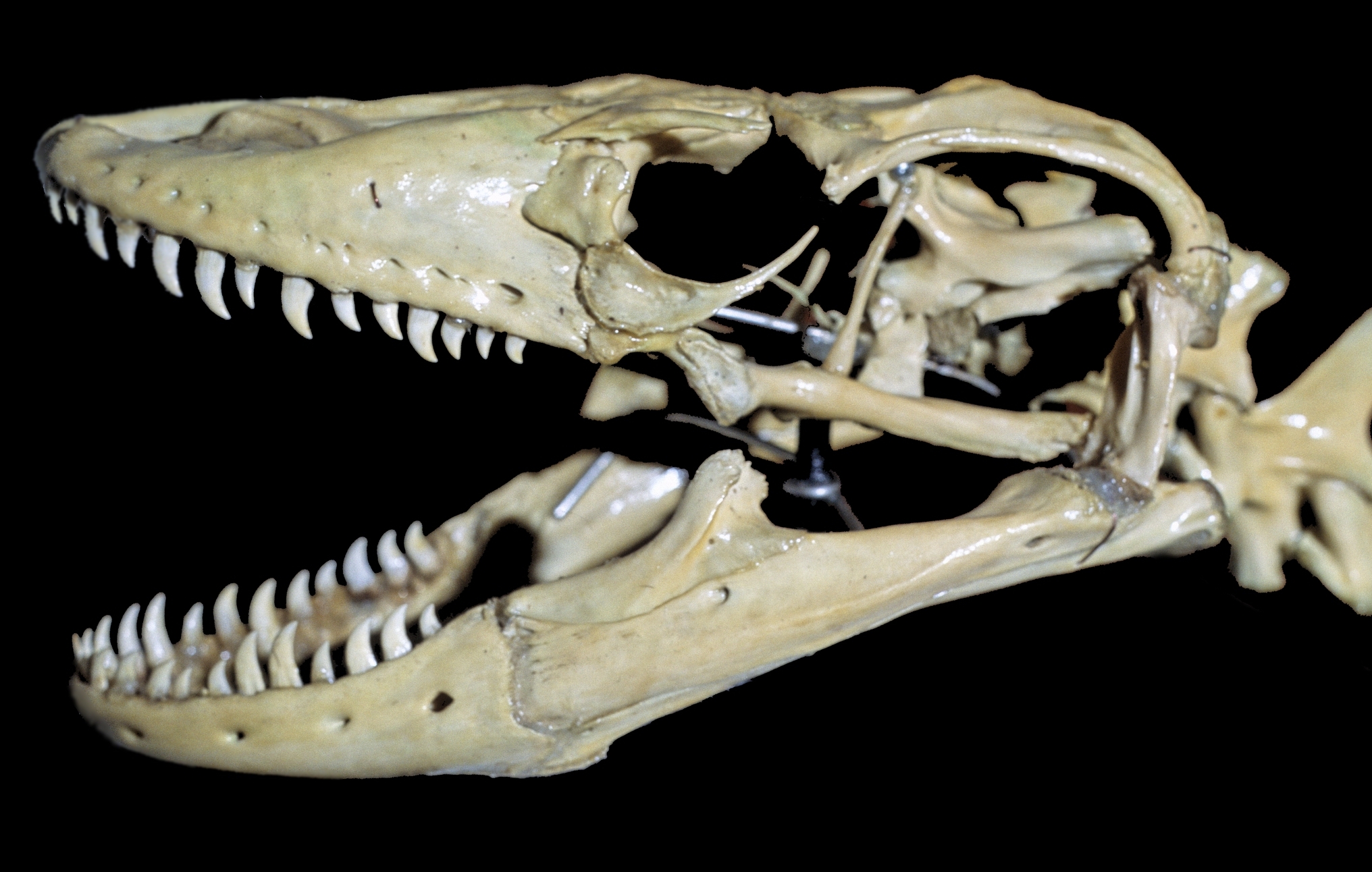|
On The Track Of Unknown Animals
''On the Track of Unknown Animals'' is a cryptozoological book by the Belgian- French zoologist Bernard Heuvelmans that was first published in 1955 under the title ''Sur la Piste des Bêtes Ignorées''. The English translation by Richard Garnett was published in 1958 with some updating by the author and with a foreword by Gerald Durrell. A revised and abridged edition was published in 1965, and a further edition in 1995. It is credited with introducing the term cryptozoologyGeorge Gaylord Simpson, ''Proceedings of the American Philosophical Society'', Vol. 128, No. 1 (March 30, 1984), pp1-19 "Mammals and Cryptozoology" and established its author as the "Father of Cryptozoology."Peter Dendle ''Folklore'' Vol 117, No. 2 (2006), pp 190-206 "Cryptozoology in the Medieval and Modern Worlds" Subject As one reviewer explained, it is a book "about animals that ''might'' exist."D. Johnson ''Science New Series'', Vol. 130, No. 3384 (Nov. 6, 1959), pp. 1245-1246 (book review) ''On the Track o ... [...More Info...] [...Related Items...] OR: [Wikipedia] [Google] [Baidu] |
Bernard Heuvelmans
Bernard Heuvelmans (10 October 1916 – 22 August 2001) was a Belgian- French scientist, explorer, researcher, and writer probably best known, along with Scottish-American biologist Ivan T. Sanderson, as a founding figure in the pseudoscience and subculture of cryptozoology. His 1958 book ''On the Track of Unknown Animals'' (originally published in French in 1955 as ''Sur la Piste des Bêtes Ignorées'') is often regarded as one of the most influential cryptozoology texts. Life Heuvelmans was born on 10 October 1916 in Le Havre, France, and raised in Belgium and earned a doctorate in zoology from the Free University of Brussels (now split into the Université Libre de Bruxelles and the Vrije Universiteit Brussel). Heuvelmans was a pupil of Serge Frechkop, a proponent of the Theory of Initial Bipedalism. In 1939, his doctoral dissertation concerned the teeth of the aardvark. During World War II he had escaped from a Nazi prison camp and later worked as a jazz singer in Paris.M ... [...More Info...] [...Related Items...] OR: [Wikipedia] [Google] [Baidu] |
Giant Panda
The giant panda (''Ailuropoda melanoleuca''), also known as the panda bear (or simply the panda), is a bear species endemic to China. It is characterised by its bold black-and-white coat and rotund body. The name "giant panda" is sometimes used to distinguish it from the red panda, a neighboring musteloid. Though it belongs to the order Carnivora, the giant panda is a folivore, with bamboo shoots and leaves making up more than 99% of its diet. Giant pandas in the wild occasionally eat other grasses, wild tubers, or even meat in the form of birds, rodents, or carrion. In captivity, they may receive honey, eggs, fish, yams, shrub leaves, oranges, or bananas along with specially prepared food. The giant panda lives in a few mountain ranges in central China, mainly in Sichuan, and also in neighbouring Shaanxi and Gansu. As a result of farming, deforestation, and other development, the giant panda has been driven out of the lowland areas where it once lived, and it is a conser ... [...More Info...] [...Related Items...] OR: [Wikipedia] [Google] [Baidu] |
Zoology Books
Zoology ()The pronunciation of zoology as is usually regarded as nonstandard, though it is not uncommon. is the branch of biology that studies the animal kingdom, including the structure, embryology, evolution, classification, habits, and distribution of all animals, both living and extinct, and how they interact with their ecosystems. The term is derived from Ancient Greek , ('animal'), and , ('knowledge', 'study'). Although humans have always been interested in the natural history of the animals they saw around them, and made use of this knowledge to domesticate certain species, the formal study of zoology can be said to have originated with Aristotle. He viewed animals as living organisms, studied their structure and development, and considered their adaptations to their surroundings and the function of their parts. The Greek physician Galen studied human anatomy and was one of the greatest surgeons of the ancient world, but after the fall of the Western Roman Empire and ... [...More Info...] [...Related Items...] OR: [Wikipedia] [Google] [Baidu] |
Cryptozoology
Cryptozoology is a pseudoscience and subculture that searches for and studies unknown, legendary, or extinct animals whose present existence is disputed or unsubstantiated, particularly those popular in folklore, such as Bigfoot, the Loch Ness Monster, Yeti, the chupacabra, the Jersey Devil, or the Mokele-mbembe. Cryptozoologists refer to these entities as ''cryptids'', a term coined by the subculture. Because it does not follow the scientific method, cryptozoology is considered a pseudoscience by mainstream science: it is neither a branch of zoology nor of folklore studies. It was originally founded in the 1950s by zoologists Bernard Heuvelmans and Ivan T. Sanderson. Scholars have noted that the subculture rejected mainstream approaches from an early date, and that adherents often express hostility to mainstream science. Scholars have studied cryptozoologists and their influence (including the pseudoscience's association with Young Earth creationism), noted parallels in crypt ... [...More Info...] [...Related Items...] OR: [Wikipedia] [Google] [Baidu] |
Newspapers
A newspaper is a periodical publication containing written information about current events and is often typed in black ink with a white or gray background. Newspapers can cover a wide variety of fields such as politics, business, sports and art, and often include materials such as opinion columns, weather forecasts, reviews of local services, obituaries, birth notices, crosswords, editorial cartoons, comic strips, and advice columns. Most newspapers are businesses, and they pay their expenses with a mixture of subscription revenue, newsstand sales, and advertising revenue. The journalism organizations that publish newspapers are themselves often metonymically called newspapers. Newspapers have traditionally been published in print (usually on cheap, low-grade paper called newsprint). However, today most newspapers are also published on websites as online newspapers, and some have even abandoned their print versions entirely. Newspapers developed in the 17th ... [...More Info...] [...Related Items...] OR: [Wikipedia] [Google] [Baidu] |
Loch Ness Monster
The Loch Ness Monster ( gd, Uilebheist Loch Nis), affectionately known as Nessie, is a creature in Scottish folklore that is said to inhabit Loch Ness in the Scottish Highlands. It is often described as large, long-necked, and with one or more humps protruding from the water. Popular interest and belief in the creature has varied since it was brought to worldwide attention in 1933. Evidence of its existence is anecdotal, with a number of disputed photographs and sonar readings. The scientific community explains alleged sightings of the Loch Ness Monster as hoaxes, wishful thinking, and the misidentification of mundane objects. The pseudoscience and subculture of cryptozoology has placed particular emphasis on the creature. Origin of the name In August 1933, the ''Courier'' published the account of George Spicer's alleged sighting. Public interest skyrocketed, with countless letters being sent in detailing different sightingsR. Binns ''The Loch Ness Mystery Solved'' pp 1 ... [...More Info...] [...Related Items...] OR: [Wikipedia] [Google] [Baidu] |
Yeti
The Yeti ()"Yeti" ''Random House Webster's Unabridged Dictionary''. is an ape-like creature purported to inhabit the Himalayan mountain range in Asia. In western popular culture, the creature is commonly referred to as the Abominable Snowman. Many dubious articles have been offered in an attempt to prove the existence of the Yeti, including Anecdotal evidence, anecdotal visual sightings, disputed video recordings, photographs, and plaster casts of large footprints. Some of these are speculated or known to be hoaxes. Folklore studies, Folklorists trace the origin of the Yeti to a combination of factors including Sherpa people, Sherpa folklore and misidentified fauna such as Himalayan brown bear, bear or yak. The Yeti is commonly compared to Bigfoot of North America, as the two subjects often have similar physical descriptions. ...
|
Sea Serpent
A sea serpent or sea dragon is a type of dragon sea monster described in various mythologies, most notably Mesopotamian (Tiamat), Judaeo-Christian (Leviathan), Greek (Cetus, Echidna, Hydra, Scylla), and Norse (Jörmungandr). Mythology and folklore Mediterranean and Western Asia The mytheme, the chief god in the role of the hero slaying a sea serpent, is widespread both in the ancient Near East and in Indo-European mythology, e.g. Lotan and Hadad, Leviathan and Yahweh, Tiamat and Marduk (see also Labbu, Bašmu, Mušḫuššu), Illuyanka and Tarhunt, Yammu and Baal in the Baal Cycle etc. The Hebrew Bible also has less mythological descriptions of large sea creatures as part of creation under God's command, such as the Tanninim mentioned in Book of Genesis 1:21 and the "great serpent" of Amos 9:3. In the Aeneid, a pair of sea serpents killed Laocoön and his sons when Laocoön argued against bringing the Trojan Horse into Troy. In antiquity and in the Bible, dragons were envi ... [...More Info...] [...Related Items...] OR: [Wikipedia] [Google] [Baidu] |
Mokele-mbembe
In cryptozoology, the Mokele-mbembe (also written as "Mokèlé-mbèmbé"), Lingala for "one who stops the flow of rivers", is a water-dwelling entity that supposedly lives in the Congo River Basin, sometimes described as a living creature, sometimes as a spirit. Those that allegedly saw the entity describe it as a large quadrupedal herbivore with smooth skin, a long neck and a single tooth, sometimes said to be a horn. In early to mid 20th century, the entity would become a point of focus among adherents of the pseudoscience of cryptozoology, and young Earth creationism, resulting in numerous expeditions led by cryptozoologists and funded by young Earth creationists and other groups with the objective to find evidence that invalidates or contradicts the scientific consensus regarding evolution. Paleontologist Donald Prothero remarks that "the quest for Mokele-Mbembe... is part of the effort by creationists to overthrow the theory of evolution and teaching of science by any means ... [...More Info...] [...Related Items...] OR: [Wikipedia] [Google] [Baidu] |
Okapi
The okapi (; ''Okapia johnstoni''), also known as the forest giraffe, Congolese giraffe, or zebra giraffe, is an artiodactyl mammal that is endemic to the northeast Democratic Republic of the Congo in central Africa. It is the only species in the genus ''Okapia''. Although the okapi has striped markings reminiscent of zebras, it is most closely related to the giraffe. The okapi and the giraffe are the only living members of the family Giraffidae. The okapi stands about tall at the shoulder and has a typical body length around . Its weight ranges from . It has a long neck, and large, flexible ears. Its coat is a chocolate to reddish brown, much in contrast with the white horizontal stripes and rings on the legs, and white ankles. Male okapis have short, distinct horn-like protuberances on their heads called ossicones, less than in length. Females possess hair whorls, and ossicones are absent. Okapis are primarily diurnal, but may be active for a few hours in darkness. They ... [...More Info...] [...Related Items...] OR: [Wikipedia] [Google] [Baidu] |
Thylacine
The thylacine ( , or , also ) (''Thylacinus cynocephalus'') is an extinct carnivorous marsupial that was native to the Australian mainland and the islands of Tasmania and New Guinea. The last known live animal was captured in 1930 in Tasmania. It is commonly known as the Tasmanian tiger (because of its striped lower back) or the Tasmanian wolf (because of its canid-like characteristics). Various Aboriginal Tasmanian names have been recorded, such as ''coorinna'', ''kanunnah'', ''cab-berr-one-nen-er'', ''loarinna'', ''laoonana'', ''can-nen-ner'' and ''lagunta'', while ''kaparunina'' is used in Palawa kani. The thylacine was relatively shy and nocturnal, with the general appearance of a medium-to-large-size canid, except for its stiff tail and abdominal pouch similar to that of a kangaroo. Because of convergent evolution, it displayed an anatomy and adaptations similar to the tiger (''Panthera tigris'') and wolf (''Canis lupus'') of the Northern Hemisphere, such as dark trans ... [...More Info...] [...Related Items...] OR: [Wikipedia] [Google] [Baidu] |
Komodo Dragon
The Komodo dragon (''Varanus komodoensis''), also known as the Komodo monitor, is a member of the monitor lizard family Varanidae that is endemic to the Indonesian islands of Komodo, Rinca, Flores, and Gili Motang. It is the largest extant species of lizard, growing to a maximum length of , and weighing up to . As a result of their size, Komodo dragons are apex predators, and dominate the ecosystems in which they live. Komodo dragons hunt and ambush prey including invertebrates, birds, and mammals. It has been claimed that they have a venomous bite; there are two glands in the lower jaw that secrete several toxic proteins. The biological significance of these proteins is disputed, but the glands have been shown to secrete an anticoagulant. Komodo dragons' group behavior in hunting is exceptional in the reptile world. The diet of Komodo dragons mainly consists of Javan rusa (''Rusa timorensis''), though they also eat considerable amounts of carrion. Komodo dragons also occ ... [...More Info...] [...Related Items...] OR: [Wikipedia] [Google] [Baidu] |






.jpg)

